Woodwell Team Awarded Commendation in Climate Creatives Challenge
A team of Woodwell researchers and Communications staff received a commendation in the inaugural Climate Creatives Challenge (CCC). The CCC is a series of design challenges created to encourage new ways of communicating the impacts of climate change and the benefits of adaptation. The first challenge engaged creators working across different media—from film to photography, sculpture, and graphic design— on the topic of extreme flooding.
The challenge asked: “How can we communicate the impacts of flooding (past, present or future) and the benefits of adaptation and resilience?”
The Woodwell team used the Center’s flood risk analyses to create an animated infographic demonstrating how extreme flooding could disrupt essential daily tasks for residents of Lawrence, MA. It compares two different neighborhoods to highlight that risk exposure can vary significantly within the same city, and that poorer residents often suffer the first and worst impacts.
Finding out-of-the-box ways to communicate the impacts of climate change is important, as solving the climate crisis will require us to engage audiences from diverse backgrounds and spur them to action.
“The beauty of climate communication is finding ways to overcome the challenge of informing people in a way that elicits empathy and inspires action, rather than overwhelming them into passivity,” says challenge participant and Woodwell Arctic communications specialist, Jessica Howard. “The Climate Creatives Challenge seemed like the perfect opportunity to not only take a more imaginative approach to communicating the impact of the climate crisis but to also further reveal how race and financial privilege make a difference in who bears the brunt of it.”
Contest judges awarded the graphic a commendation, stating that it was, “visually engaging” and “a clever depiction of disruption and inequality.” The final piece was featured in the compendium for Challenge One alongside other winners. Winners will also be displayed at Flood Expo in Birmingham, UK, September 14 and 15.
.
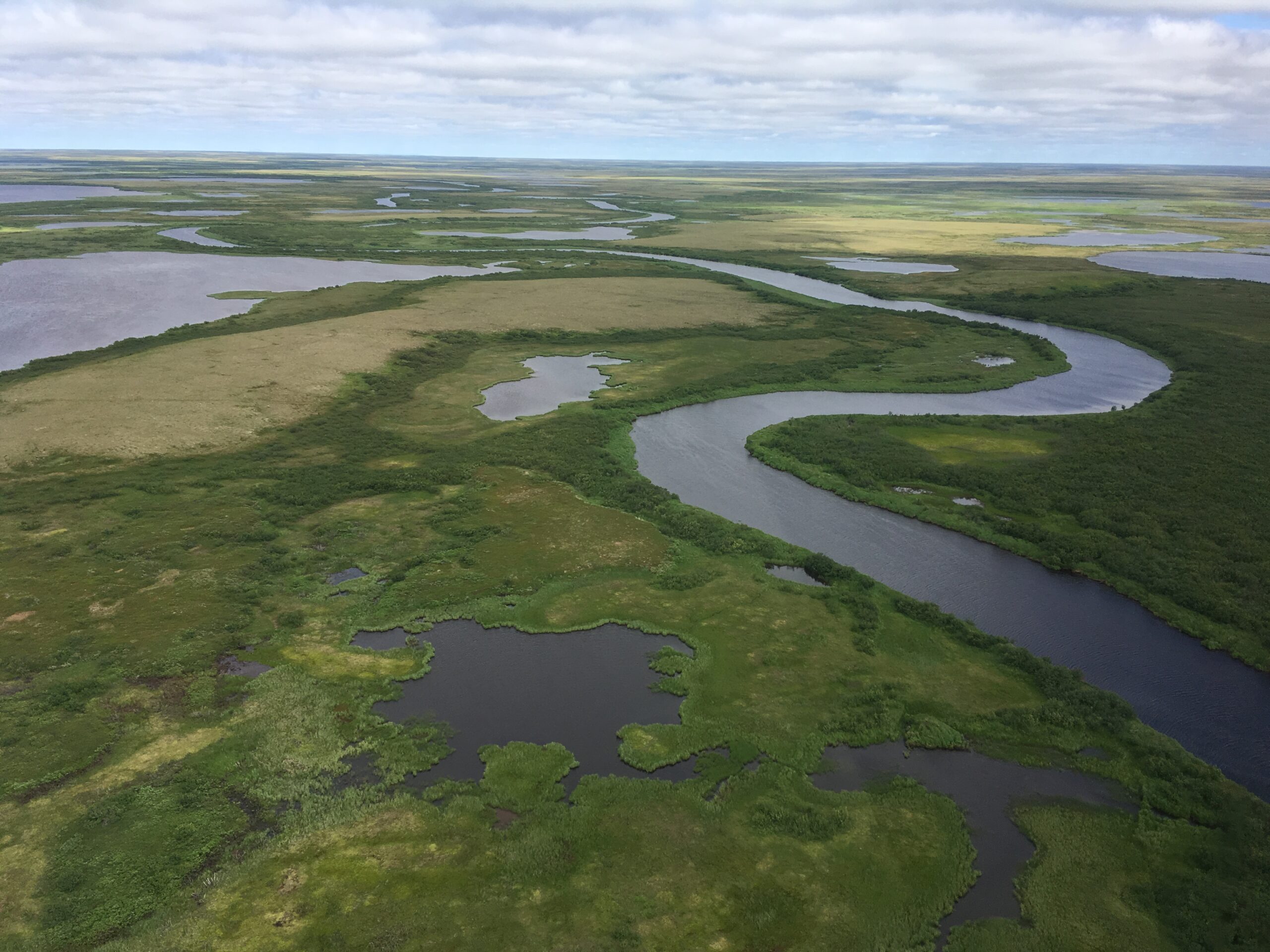
The Fund for Climate Solutions is a competitive, internal granting mechanism that supports early-stage and high-risk, high-reward research with breakthrough potential. New awards are made twice each year. The latest cohort comprises seven highly-collaborative projects and more than $650,000 in funding to support innovative extensions of ongoing research with near-term policy relevance.
Preserving and Increasing Carbon Stocks of Large Trees on Federal Lands
Project Lead: Dr. Richard Birdsey
There is an urgent need to identify large, older trees and mature forest stands on U.S. public lands that could be protected from harvest to maintain their carbon stocks and growth potential. Building on preliminary work with the Natural Resources Defense Council, and working in collaboration with Wild Heritage, Woodwell Climate scientists will develop a quantitative method for identifying mature forests and apply this to U.S. National Forests in order to clarify thresholds for protection from logging and estimate the likely carbon storage resulting from protection. This project addresses key policies for federal land management contained in two recent Executive Orders, and has the potential to contribute significantly to maintaining present and future carbon stocks on public lands and achieving the nation’s goal of net-zero greenhouse gas emissions by 2050.
The Importance of Protected Areas and Indigenous Lands for Amazon Climate
Project Lead: Dr. Michael T. Coe
Amazon forests take up water from the soil and evaporate it to the atmosphere, cooling the land surface and sustaining up to half of regional rainfall. This forest function is critical for biodiversity, carbon cycling, and food and energy production, but it is threatened by deforestation and its integration into climate policy has lagged due to knowledge gaps. In this project, we will quantify the climatic importance of forests in Indigenous territories, protected natural areas, and undesignated lands, which together account for roughly half the area of standing Amazon forest and a third of deforestation. This new understanding will be key to the development of targeted conservation strategies and stronger policies and land-use planning for protection of forests and their climate benefits.
Quantifying carbon fluxes in wetland ecosystems from tropical South America to temperate New England
Project Lead: Dr. Marcia Macedo
Wetland ecosystems—whether natural, man-made, or restored—play a significant role in carbon cycling. Whether they are net sinks or sources of carbon to the atmosphere depends on local hydrology, vegetation, and land management in a changing climate. Woodwell scientists have studied these processes across a wide range of ecosystems, including small reservoirs in the Amazon, forests and bogs in Maine, and active or newly restored cranberry bogs in Massachusetts. However, traditional techniques for measuring carbon fluxes can be limiting in ecologically complex and/or rapidly changing environments. The purchase of a portable gas analyzer will enable real-time measurement of greenhouse gas fluxes at fine scale, adding a new dimension to ongoing work in these important environments.
Rapid Soil Health Assessment
Project Lead: Dr. Jonathan Sanderman
In order for food producers around the globe to improve soil health and increase soil carbon storage, they must first be able to measure it reliably and inexpensively. Previous work supported by the Fund for Climate Solutions has demonstrated that low-cost, handheld, infrared sensors connected to smartphones have the potential to meet the need for soil carbon monitoring. This project will expand the scope of ongoing work with Africa-based Innovative Solutions for Decision Agriculture (iSDA) to assess the effectiveness of this technology for measuring overall soil fertility and soil health status. This work has the potential to enable scientific advances and improved land management decisions that could help close the agricultural yield gap in some of the world’s poorest regions.
Climate Change and Global Security
Project Lead: Dr. Alex Naegele
Climate change has been identified as a critical national security issue—as a threat multiplier that exacerbates existing societal stressors and regional instabilities. However, the inclusion of granular climate impacts in security strategy is not yet widely practiced. In collaboration with the Center for Climate & Security, Woodwell Climate’s Risk Program aims to provide actionable climate intelligence that can be used to directly inform security policy. In this project, two case studies on countries with strong regional influence and mounting climate vulnerabilities (e.g. Indonesia, Iran, Turkey, and South Africa) will synthesize climate risk assessments and security insight to develop a comprehensive climate security analysis. This research will be accompanied by U.S. policy recommendations to address security risks, and it will be shared with policymakers and leaders in the security community to normalize this essential approach to climate security.
Gaining New Insights into Drivers of Carbon Emissions from Alaska Permafrost by Integrating Radiocarbon, VLF-ERT, and Soil Respiration Monitoring
Project Lead: Dr. Jennifer Watts
Thawing high latitude permafrost is expected to become a significant source of carbon dioxide and methane emissions this century. Accurately projecting future emissions requires not only measuring overall carbon release and uptake rates, but also understanding the biological and ecological processes at work. This project addresses two key knowledge gaps: differentiating the contributions of soil microbes and plant respiration to carbon emissions under differing environmental conditions, and understanding the impact of fire on subsequent carbon loss from soils. Specialized, year-round gas monitoring at burned and unburned sites near Hess Creek, AK, along with carbon dating and permafrost decay mapping using Very Low Frequency Electrical Resistivity Tomography (VLF-ERT), will provide proof of concept for a novel technique that can be applied across the Arctic to address these knowledge gaps and improve models and projections of permafrost thaw carbon emissions.
Tracking Global Contaminants in Ecosystems on the Frontline of Permafrost Thaw
Project Lead: Dr. Scott Zolkos
Rapid permafrost thaw is creating hazardous conditions for northern communities, as thawing and collapsing ground threatens infrastructure and Indigenous ways of living. It also poses a severe risk to human and ecosystem health, because toxic mercury (Hg) and poly- and perfluoroalkyl substances (PFAS) have accumulated to high levels within permafrost region ecosystems and are now being released into drinking water, and bioaccumulating in fish and other organisms that are essential to northern diets, health, and cultures. Despite the risk, the magnitude of Hg and PFAS release associated with permafrost thaw is largely unknown. This project will leverage the scientific infrastructure and community outreach efforts of two flagship Woodwell Climate projects—Permafrost Pathways and Science on the Fly—to establish the first observatory for tracking contaminants in waters of local importance within permafrost regions.
Explainer: Pakistan fatal flooding has hallmarks of warming
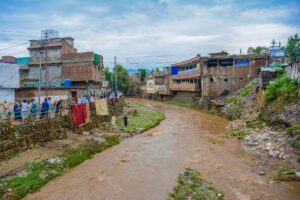
The familiar ingredients of a warming world were in place: searing temperatures, hotter air holding more moisture, extreme weather getting wilder, melting glaciers, people living in harm’s way, and poverty. They combined in vulnerable Pakistan to create unrelenting rain and deadly flooding.
The flooding has all the hallmarks of a catastrophe juiced by climate change, but it is too early to formally assign blame to global warming, several scientists tell The Associated Press. It occurred in a country that did little to cause the warming, but keeps getting hit, just like the relentless rain.
Continue reading on Associated Press News.
Recent study shows widespread patterns of loss, upending scientists’ previous projections
The Arctic is no stranger to loss. As the region warms nearly four times faster than the rest of the world, glaciers collapse, wildlife suffers and habitats continue to disappear at a record pace.
Now, a new threat has become apparent: Arctic lakes are drying up, according to new research published in the journal Nature Climate Change. The study, led by University of Florida postdoctoral researcher Dr. Elizabeth Webb in collaboration with Woodwell Associate scientist, Dr. Anna Liljedahl, flashes a new warning light on the global climate dashboard.
Research reveals that over the past 20 years, Arctic lakes have shrunk or dried completely across the pan-Arctic, a region spanning the northern parts of Canada, Russia, Greenland, Scandinavia and Alaska. The findings offer clues about why the mass drying is happening and how the loss can be slowed.
The lake decline comes as a surprise. Scientists had predicted that climate change would initially expand lakes across the tundra, due to land surface changes resulting from melting ground ice, with eventual drying in the mid-21st or 22nd century. Instead, it appears that thawing permafrost, the frozen soil that blankets the Arctic, may drain lakes and outweigh this expansion effect, says Dr. Webb. The team theorized that thawing permafrost may decrease lake area by creating drainage channels and increasing soil erosion into the lakes.
These lakes are cornerstones of the Arctic ecosystem. They provide a critical source of fresh water for local Indigenous communities and industries. Threatened and endangered species, including migratory birds and aquatic creatures, also rely on the lake habitats for survival.
“Our findings suggest that permafrost thaw is occurring even faster than we as a community had anticipated,” Dr. Webb said. “It also indicates that the region is likely on a trajectory toward more landscape-scale drainage in the future.”
If accelerated permafrost thaw is to blame, that’s unwelcome news. The Arctic permafrost is a natural warehouse of preserved organic matter and planet-warming gasses.
“Permafrost soils store nearly two times as much carbon as the atmosphere,” Dr. Webb said. “There’s a lot of ongoing research suggesting that as permafrost thaws, this carbon is vulnerable to being released to the atmosphere in the form of methane and carbon dioxide.”
According to Dr. Liljedahl, this study shifts the perspective on prior research—there is still more to learn when it comes to how climate change is altering the Arctic landscape.
“This work shows that we are “living the future” already,” said Dr. Liljedahl. “Or if you look at it from the other perspective, the current models used to project future surface water coverage and permafrost thaw across the Arctic are “off”. They are not capturing key processes. We have already seen reduced lake coverage happening over the previous two decades.”
There is a silver lining in the researcher’s findings. Previous models of lake dynamics predicted lake expansion, which thaws the surrounding permafrost. But because lakes are drying, near-lake permafrost is likely not thawing as fast.
“It’s not immediately clear exactly what the trade-offs are, but we do know that lake expansion causes carbon losses orders of magnitude higher than occurs in surrounding regions,” Dr. Webb said. “So it should mean that we won’t see quite as much carbon emitted as previously thought, because lakes are drying and not wetting.”
The research team used a machine-learning approach to examine the climate change mechanisms responsible for lake area change. By harnessing large ensembles of satellite images to assess patterns of surface water loss, they were able to analyze decades of data across the Arctic. The data is available on the Permafrost Discovery Gateway (PDG), a project that Dr. Liljedahl leads, the goal of which is to make permafrost data broadly accessible to encourage Arctic change research.
“We made the pan-Arctic dataset, including both long-term trend analysis and individual years, accessible on the PDG so that anyone with internet access can interact with the dataset. We are still building the PDG visualization and analysis tools so more options to enable discovery will become available in the coming two years,” said Dr. Liljedahl
The best way to curtail the lakes’ demise and protect permafrost is to
cut fossil fuel emissions and limit global temperature rise.
“The snowball is already rolling,” Webb said, stating that we need to act now to slow these changes. “It’s not going to work to keep on doing what we’re doing.”
Record rain is hitting drought-stricken areas. That’s not good news.
A warmer climate is driving precipitation to higher extremes in both flooding and drought
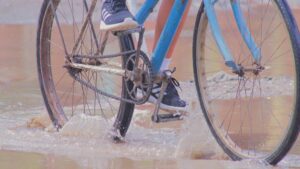
Extreme ‘whiplash’ between drought and floods makes it harder to recover from climate disasters
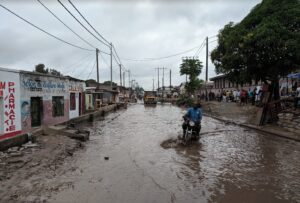
Parts of northern Texas, mired in a drought labeled as extreme and exceptional, are flooding under torrential rain. In a drought.
Sound familiar? It should. The Dallas region is just the latest drought-suffering-but-flooded locale during a summer of extreme weather whiplash, likely goosed by human-caused climate change, scientists say. Parts of the world are lurching from drought to deluge.
Rebuilding Massachusetts’ wetlands from the ground up
Four years into a transformative restoration, the Coonamessett River is a living laboratory for how to revive an ecosystem
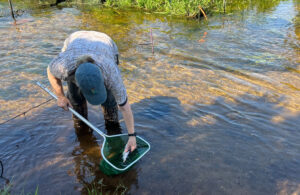
Dr. Christopher Neill, a senior scientist at Woodwell Climate Research Center, holds a confused snapping turtle at an arm’s length, doing his best to keep the snapping end as far from him as possible. He moves it off the walking path to a sandy hill. Another turtle has already found a comfortable spot nearby and begun laying eggs.
“I guess with this lightly vegetated area, we’ve made great snapping turtle nesting habitat,” Dr. Neil says, wiping off his hands.
The slope overlooks the older section of the Coonamessett River restoration project— a chaotic and vibrant wetland dotted with rushes, sedges, and shrubs. Swallows and osprey wheel overhead, the larger birds plunging down to the water occasionally when they spot a meal.
Two decades ago, this area was a cranberry bog. Cranberry plants grow well with their feet wet and many of the river valley’s natural wetlands were converted for their cultivation. Native biodiversity was plowed under and flooded, and the original course of the river was diverted for better control of irrigation.
When the cranberry growing lease on the land ended in the early 2000s, a determined group of local residents, who would come to call themselves the Coonamessett River Trust, pushed the town of Falmouth, Massachusetts to return the land to its natural state—a diverse natural wetland. Despite some opposition, the proposal was successful and work began on the restoration in 2017.
When the wetland was converted, it took with it ecosystem services it had been performing in the watershed for millenia. Wetlands are good at removing nitrogen. When groundwater interacts with plants and microbes, polluting nitrate is converted into plant biomass and harmless nitrogen gas. Here on Cape Cod, nitrates that leach out from homes and yards in fertilizers and wastewater typically get a free ride to the coast, causing algal growth to explode in estuaries. When these blooms die and decay, they use up oxygen in the water which can suffocate fish.
Additionally, many of the wetlands converted to cranberry bogs were originally Atlantic white cedar swamps, a unique ecosystem abundant in Sphagnum moss. This genus of moss forms peat as it dies and builds up in the soil. Over time, peat soils can sequester massive amounts of carbon.
The goal of restoration is to reinstate these natural processes. But getting an ecosystem back to a self-sustaining state can require a little tinkering—making adjustments to the landscape and water flow to encourage the flourishing of some species over others.
There can be trade-offs between sequestering carbon and building biodiversity, though. Compared to grasses, trees offer more long-term carbon sequestration, but the shade they provide limits the number of species that can grow underneath them. A mosaic of open, grassy, meadow combined with more wooded spots allows for greater diversity. While the first section of the Coonamessett River restoration prioritized tree growth, project scientists designed the second phase with more intentionally varied topography for diversity— some higher, drier patches where trees can thrive, and some lower, boggier areas preventing tree saplings from out-competing the grass.
Researchers now come to the site frequently to continue monitoring how the wetland is changing over time— conducting water sampling, measuring river flow, and surveying biodiversity.
“I think we’ve shown that the naturalization process can work extremely well,” says Dr. Neill.
Counting on Herring
Another crucial element of a successful restoration is keystone species—creatures that have an outsized impact on the overall ecosystem. In the Coonamessett, that means the alewives and blueback herrring (collectively called river herring) that used to overwhelm these waterways. They are a fish that, as Woodwell senior scientist Dr. Linda Deegan says with a grin “participates heavily in the food chain. Unfortunately for them, near the bottom.”
Because almost everything eats them, a healthy river isn’t possible without them. Though they spend much of the year out at sea getting snacked on by tuna, cod, striped bass, and whales, they make the journey each spring up rivers like the Coonamessett to spawn and offer another dining option for osprey, herons, and freshwater fish species.
Populations of river herring have suffered both from overfishing on the open ocean and degradation of freshwater habitat. Before the restoration, low bridges, culverts and water control structures for growing cranberries and the altered channel of the Coonamessett River and prevented herring from easily traveling up river far enough to spawn. Both species of river herring were under consideration for the endangered species list, though they were never listed.
Herring populations have stayed steady recently, in part thanks in part to efforts like the Coonamessett restoration. Now, Dr. Deegan leads herring tagging efforts on the Coonamesset—one of the longest herring tagging operations in the northeast—to keep a close eye on fluctuating populations.
A researcher, usually Dr. Deegan herself, will catch the herring as it swims upriver to spawn, anesthetize them, and insert a tiny tag into their flank before sending them back on their way unharmed.
“When the fish passes through one of our antennae set up along the river, the antenna charges the tag and uses that to send a signal that registers the information in our data logger,” Dr. Deegan says. From this information we know what sections the herring have trouble migrating through, indicating the priority areas for restoration.
Volunteers also conduct fish counts as the herring make their way upriver between April and June each year. The hope is that, as the restoration grows in, it will ease the fish’s path to their spawning grounds and put them back on track towards the levels of abundance seen in the early 1900s. That abundance will in turn support species higher on the food chain.
The restoration’s successes have already garnered interest from across the community. Dr. Deegan leads elementary school groups through the process of tagging fish. Some older grades will later incorporate the data into their lesson plans, “adopting” tagged herring and following their journey through the river.
The adoption program and school visits have helped students recognize their shared responsibility for the health of the River. Dr. Deegan recalls a recent encounter with one 8th grader who returned to visit the restoration project. His 2nd-grade class had adopted herring and he was examining the river to see if more fish were coming back now. He makes the trip over on his bike frequently to keep tabs on the herring. The restoration has created a multi-use space that encourages recreation and education in addition to conservation science.
From Mudflat to Wetland in Under Two Years
Dr. Neill moves upriver to the footbridge where volunteers count herring in the spring. It overlooks the second phase of the restoration, completed in early 2020. Fewer trees have established themselves here, but it thrums with the diverse sounds of living things—from rustling grasses, to twittering birds and whining insects.
“This was a mudflat in the spring of 2020,” says Dr. Neill. “It ended up green and naturalized in two years.”
Though the effort of the restoration team created the right conditions for the land to flourish, much of the project’s success comes down to the sheer resilience of nature. For Dr. Neill, it’s a powerful proof of concept, especially when he thinks back to the objections raised at the outset of the project. Skeptics had doubted whether a restoration on this scale could be accomplished without falling prey to opportunistic invasive species like Phragmites—a common reed that can crowd out native plants.
“Nobody thought this would be nearly this successful. Now look at this. It’s got all this native vegetation, native grasses, blue flag Iris, sedges, rushes, and cattails. Very little Phragmites anywhere. Almost everything came in naturally, from what survived under the cranberry bog.”
The wetland that had persisted for thousands of years before the cranberry farmers, was still in the landscape. Buried deep in the soils, old seeds, dormant for at least a century, waited patiently. One quick turn of the soil during the restoration effort brought them up to the surface, and they needed no convincing to reclaim their place on the land again.
Climate risk Assessment: Lawrence, Massachusetts
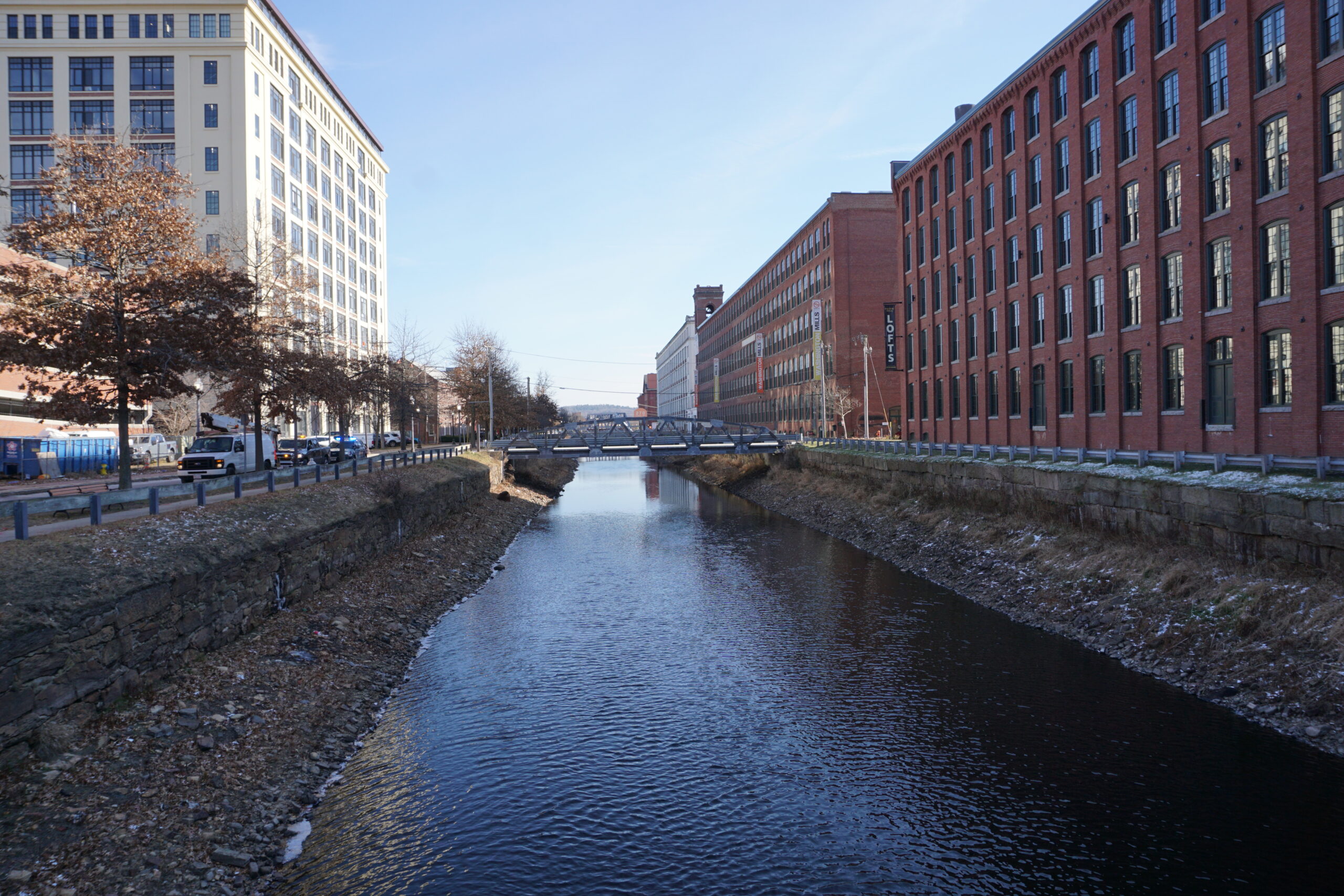
Introduction
The impacts of climate change on the frequency and severity of physical hazards are putting many communities at risk. As the threat of climate change grows, so too does the need for accessible information, tools, and expertise to support climate-resilient decision making for municipalities. Woodwell Climate Research Center (“Woodwell”) believes there is a need to localize and customize climate risk assessments. This information is critical for local government leaders as they make planning decisions, but it is not available to all communities. Woodwell believes that this science should be freely and widely available. To address this gap, Woodwell works with communities across the world, including Lawrence, MA, to provide municipal climate assessments, free of charge.
Results summary
As a result of climate change, temperatures are projected to increase in Lawrence, Massachusetts. The probability of the 100-year rainfall event, a useful indicator of flood risk, will likely triple by the mid 21st century and more than quadruple by the end of the century. In addition to periods of extreme rainfall, the city can expect the frequency of drought to increase. Negative impacts associated with these climate hazards will be disproportionately felt by elderly, poor, and minority populations. Groundwork Lawrence (groundworklawrence.org) has been actively engaged with the community in efforts to address these imbalances. Here we present our findings on extreme precipitation, flooding, drought, and heat to help Lawrence in its plans to create a more resilient future for all residents.
Extreme precipitation and flooding
The trend of intensification of extreme precipitation in the Northeast US is expected to continue under future warming. Intensification here speaks to both more frequency and more severe rainfall events. Here we use localized future precipitation data from a regional climate model1 to calculate the change in probability of extreme rainfall events. In Figures 1 and 2 we show the changes in the return period of the historical (2000–2020) 100-year rainfall event for 2040–2060 and 2070–2090, respectively. By 2040–2060, the historical 100-year event will occur with a return period between 1-in-20 and 1-in-50 in the Merrimack River valley and approximately 1-in-30 in Lawrence, MA. By 2070–2090, the 100-year event will become a 1-in-15 year event for the region.
According to the National Atlas 14 published by the National Oceanic and Atmospheric Administration, the 100-year rainfall amount in Lawrence, MA is 7.85 inches. By 2040-2060, the 100-year amount increases to 10.97 inches and by 2070-2090 this further rises to 13.3 inches. The increase in rainfall translates to larger streamflows and increased flood extents as shown in Figure 3. The historical floodplain2, based on 20th and early 21st century rainfall and streamflow data, covers large portions of downtown Lawrence, especially on the southern bank of the Merrimack river because the location is the point of confluence with the Shawsheen river. The commercial and municipal district, including the courthouse and Lawrence General Hospital on the north bank of the Merrimack river, are also susceptible to flood impacts due to the convergence of the Spicket and Merrimack rivers at the eastern edge of the Lawrence city limits. The historical floodplain impacts 1,952 structures within the Lawrence city limits. By 2040–2060, the number of structures increases to 2,688 and by 2070-2090 the figure further increases to 3,093. The stormwater system was not included in the flood modeling effort because data was not available from the City of Lawrence; however, it is highly likely that the efficacy of the stormwater system would be compromised during periods of extreme water levels on the Merrimack, Spicket, and Shawsheen rivers as outfalls may be temporarily submerged. Additionally, according to the City of Lawrence Stormwater Management Program Plan3 dated June 2021, there is no stormwater infrastructure located in southern Lawrence between MA-28 and Andover Street which becomes heavily inundated during the 100-year rainfall event.



